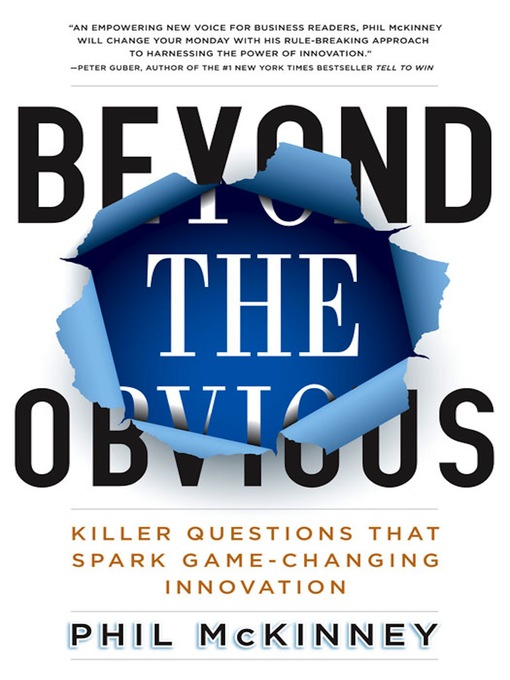
Beyond the Obvious
Killer Questions That Spark Game-Changing Innovation
کتاب های مرتبط
- اطلاعات
- نقد و بررسی
- دیدگاه کاربران
نقد و بررسی

December 19, 2011
McKinney, former vice president and chief technology officer for Hewlett-Packard’s Personal Systems Group, provides a thoughtful yet practical guide to consistently generating innovation. Arguing that ideas are a company’s most valuable currency, he maintains that an organization’s success will be determined by its ability to generate ideas that lead to innovations that customers want. To help companies ignite these ideas, McKinney shares a system called the “Killer Questions”: a tool that prompts re-evaluation of old organizational beliefs that dictate how a company operates but which may no longer hold value. To do so requires negotiating the forces inside an organization that challenge innovation as well as dealing with outside curve balls. While re-examining core beliefs is hardly new advice, McKinney’s system helps distinguish valuable ideas from others with less potential as well as paying attention to delivering value to customers, the value chain, manufacturing and supply, marketing and sales, shipping and distribution, and the customer experience. McKinney also provides an invaluable guide to extracting ideas from the book and applying them within an organization. He includes a helpful time line and six rules to keep companies on track. Offering concrete advice, McKinney gives organizations the tools they need to generate ideas and know that they’re moving in the right direction. Agent: Marc Gerald, the Agency Group.

January 15, 2012
In this bright, informative debut, McKinney, chief technology officer of Hewlett-Packard's Personal Systems Group, writes that anyone can become an "idea person," given the right approach and a willingness to work hard. The most important thing is to ask the right questions--"Killer Questions" that produce new insights into your customers, product and organization, and help trigger ideas. For example: What are the assumptions of my industry? What will my customers want in five years? Who uses my product in ways I never anticipated? Describing at length the kinds of questions that generate new information, McKinney warns that you must be prepared to defend your idea against in-house adversaries ("corporate antibodies") who are comfortable with the status quo. In a time when businesses need continuous reinvention to survive, many cling to obvious ideas that worked in the past. "Nearly all great ideas require nerve, vision, and guts to get in motion," writes the author. To help readers identify and act on their best ideas, McKinney details a four-part FIRE program (Focus, Ideation, Rank, Execution), which hones in on the essential aspects of any problem or situation. As opposed to unguided and often fruitless brainstorming, FIRE uses questions to provide a logical and much-needed structure to focus ideation efforts, improve the quality of ideas, rank the ideas so that you know which ones to work on, and then execute the ideas. Offering vivid examples of how his approach has worked at HP and elsewhere, McKinney stresses the need to vigorously question conventional rules and assumptions to generate breakthrough innovations. Valuable and ready for immediate use.
COPYRIGHT(2012) Kirkus Reviews, ALL RIGHTS RESERVED.

























دیدگاه کاربران